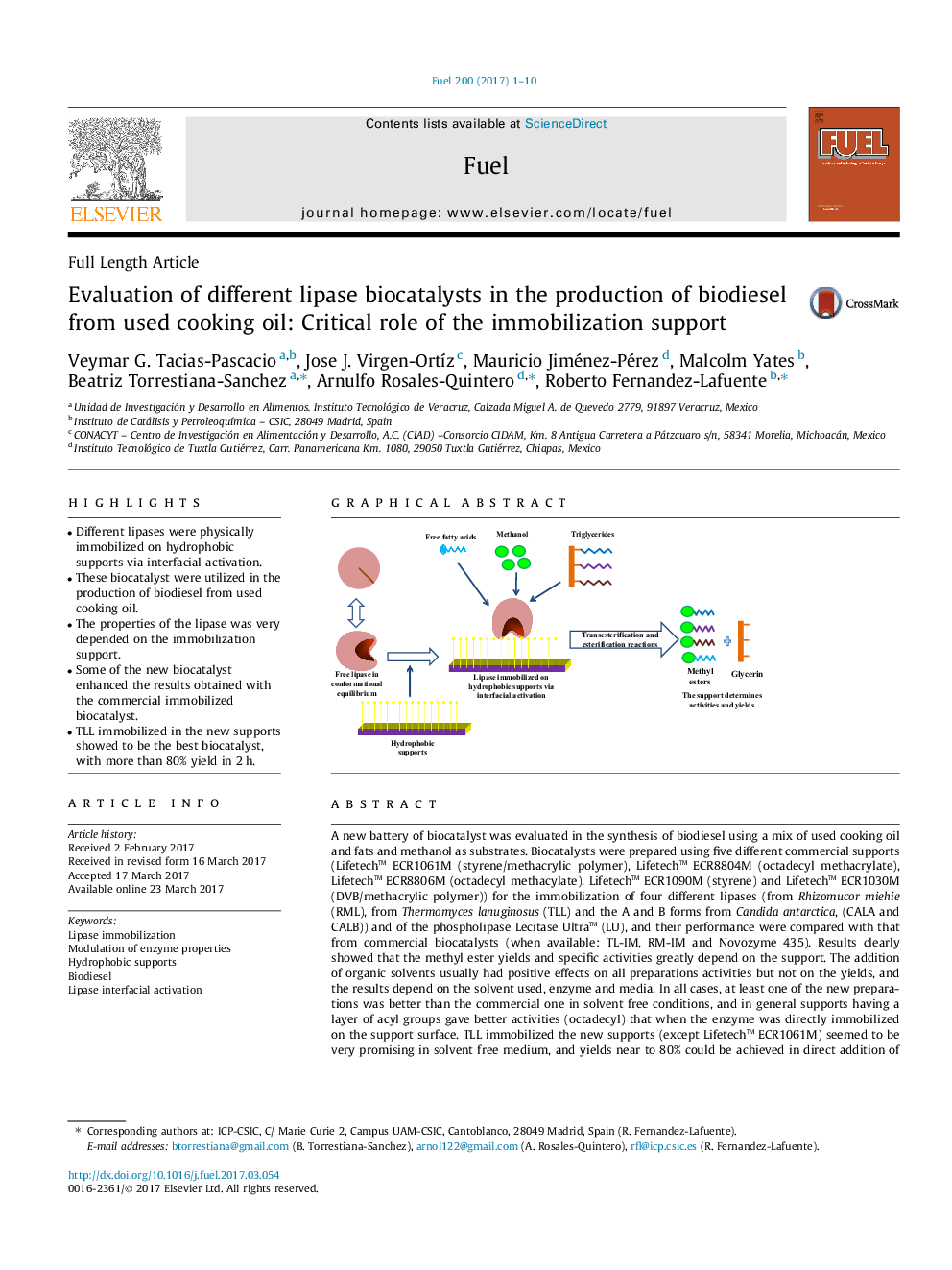| Article ID | Journal | Published Year | Pages | File Type |
|---|---|---|---|---|
| 6473679 | Fuel | 2017 | 10 Pages |
â¢Different lipases were physically immobilized on hydrophobic supports via interfacial activation.â¢These biocatalyst were utilized in the production of biodiesel from used cooking oil.â¢The properties of the lipase was very depended on the immobilization support.â¢Some of the new biocatalyst enhanced the results obtained with the commercial immobilized biocatalyst.â¢TLL immobilized in the new supports showed to be the best biocatalyst, with more than 80% yield in 2 h.
A new battery of biocatalyst was evaluated in the synthesis of biodiesel using a mix of used cooking oil and fats and methanol as substrates. Biocatalysts were prepared using five different commercial supports (Lifetech⢠ECR1061M (styrene/methacrylic polymer), Lifetech⢠ECR8804M (octadecyl methacrylate), Lifetech⢠ECR8806M (octadecyl methacylate), Lifetech⢠ECR1090M (styrene) and Lifetech⢠ECR1030M (DVB/methacrylic polymer)) for the immobilization of four different lipases (from Rhizomucor miehie (RML), from Thermomyces lanuginosus (TLL) and the A and B forms from Candida antarctica, (CALA and CALB)) and of the phospholipase Lecitase Ultra⢠(LU), and their performance were compared with that from commercial biocatalysts (when available: TL-IM, RM-IM and Novozyme 435). Results clearly showed that the methyl ester yields and specific activities greatly depend on the support. The addition of organic solvents usually had positive effects on all preparations activities but not on the yields, and the results depend on the solvent used, enzyme and media. In all cases, at least one of the new preparations was better than the commercial one in solvent free conditions, and in general supports having a layer of acyl groups gave better activities (octadecyl) that when the enzyme was directly immobilized on the support surface. TLL immobilized the new supports (except Lifetech⢠ECR1061M) seemed to be very promising in solvent free medium, and yields near to 80% could be achieved in direct addition of 3:1 methanol to triglyceride molar ratio. The results show that is not possible to discard one couple enzyme/support using other couple because the strong dependence.
Graphical abstractDownload high-res image (153KB)Download full-size image
